Errata for the book: 'Understanding Digital Signal Processing'
This blog post provides, in one place, the errata for each of the many different Editions/Printings of my book Understanding Digital Signal Processing.
If you would like the errata for your copy of the book, merely scroll down and click on the appropriate red line below. For the American versions of the various Editions of the book you'll need to know the "Printing Number" of your copy of the book. If you are not sure how to find the "Printing Number", see the instructions later in this blog.
If you cannot find your version of my book in the following list, chances are that you own an oddball version over which I had no influence or control. You can see images of a few of those 'oddball' versions at the end of this blog.
American 1st Edition |
|
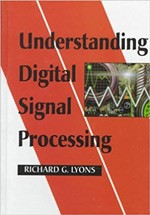
|
|
Indian 1st Edition |
|
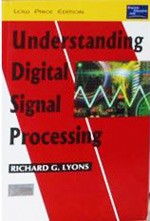
|
|
Chinese 1st Edition |
|

|
|
American 2nd Edition |
|
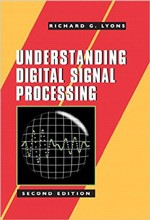
|
|
American 3rd Edition |
|
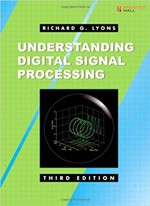
|
|
International 3rd Edition |
|
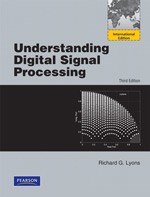
|
|
Indian 3rd Edition |
|

|
|
American First Edition: Finding the Printing Number
You can determine the "Printing Number" of the American version of the 1st Edition of the book by looking at the page just before the "Dedication" page. On that page (before the Dedication) you'll see all sorts of publisher-related information. Down toward the bottom of the page you may see lines printed something like:
ISBN 0-201-63467-8
6 7 8 9 10 MA 02 01 00 99
That initial 6 on the second line above means the "Sixth Printing". A later printing shows something like:
0-201-63467-8
910-MA-02
That initial 9 on the second line above means the "Ninth Printing". An even later printing shows something like this:
0-201-63467-8
11 12 13 14 15 16 17 18 MV 05 04 03
That initial 11 on the second line above means the "Eleventh Printing".
American Second and Third Editions: Finding the Printing Number
You can determine the "Printing Number" of the American version of the 2nd and 3rd Editions of the book by looking at the page just before the "Dedication" page. On that page (before the Dedication) you'll see all sorts of publisher-related information. Down toward the bottom of the page you should see lines printed something like:
Printed in the United States... (or " Text printed in the United States")
First Printing
indicating the "First Printing" of the book. However, for later printings the second line above may have the words such as "Second Printing" or perhaps "Third Printing".
If you cannot find such words on the page just before the "Dedication" page, check Eq. (3-51) on page 120. If Eq. (3-51) is printed as:

then your book's Printing Number is at least the Sixth Printing.
A few oddball versions
If you own one of the following versions of my book Understanding Digital Signal Processing, no errata is available for your copy of my book.

- Comments
- Write a Comment Select to add a comment
Dear Mr.Lyons,
In your book(3rd. Edition), section 2.3, Bandpass Sampling, equation (2-6) it tells m.Fs=2.Fc-B
Shouldn't m always be even? We have some k number of Fs jumps from (-Fc+B/2) to zero, and another k number of Fs jumps from zero to (Fc-B/2). So total would be m=2.k. I can't see how m can be an odd number.

Hello aarash.
My variable 'm' can be either odd or even. In Chapter 2, my Table 2-1 (page 45) lists the acceptable ranges for the fs sampling rates when m = 1, 2, and 3 given that fc = 20 Mhz and B = 5 Mhz.
My Figure 2-9 (page 46) shows the sampled spectra for several example fs sample rates given in Table 2-1. In Figure 2-9 you can see the spectra for m = 1 and m = 3 (both values of which are odd integers).
The bottom of Figure 2-9 (page 46) shows the sampled spectra
for m = 5, but when m = 5 the computed range for fs (shown in Table 2-1) violates the Nyquist criterion because fs must always be equal to or greater than 2 times B. (In Table 2-1 for m = 5, the sampling freq range of 7 Mhz -to- 7.5 Mhz is less than 2 times B.)
Thank you now I get it. I was only thinking of cases where there is a replica at 0 Hz.
The text "...butt up against each other exactly at zero Hz." preceding Eqn (2-6) does imply that all 'm' in that relation will result in 'PQ' spectra being abutted and that an abuttment will occur at zero Hz. (From Ed 2 P7)

Hi tandyn300. I'm not exactly sure I understood what you wrote. But what we can say is, "Depending on 'fc' and 'B', there are values of 'm' (satisfying the Nyquist criterion) that yield an 'fs' value in Eq. (2-6) where the P & Q spectral bands do not butt up against each other at zero Hz." My Table 2-1 and Figure 2-9(e), where m = 3, is an example of such a situation.
Dear Mr. Lyons,
I need a solution manual for your "understanding DSP" indian edition. Since I am self teaching myself, solving excercises have been quite impossible without a second hand. I noticed that pearson has published the manual some time back but it is out of print now. So where can I get one?
With respect.
- Sayan

Hello digital_sano.
The Solutions Manual is only sent to professors (within a recognized university) who formally adopt "Understanding DSP" as the required textbook for their university-level DSP courses.
In the 3rd edition, chapter 6.9 Scaling of the gain of IIR filters, on p301, Figure 6-30 I believe G2 should be 1/G2 on the left hand side of figures (a) and (b), so that you get 1/G2 . [(1+ a(1)z + a(2)z^2] and Y(z) . [(1+ a(1)z + a(2)z^2] = G2. X(z). [G1b(0) + G1b(1)z +G1b(2)z^2]

Hello epe. I am not able to understand what your "1/G2 . [(1+ a(1)z + a(2)z^2] and Y(z) . [(1+ a(1)z + a(2)z^2] = G2. X(z). [G1b(0) + G1b(1)z +G1b(2)z^2]" text means.
To post reply to a comment, click on the 'reply' button attached to each comment. To post a new comment (not a reply to a comment) check out the 'Write a Comment' tab at the top of the comments.
Please login (on the right) if you already have an account on this platform.
Otherwise, please use this form to register (free) an join one of the largest online community for Electrical/Embedded/DSP/FPGA/ML engineers:





















